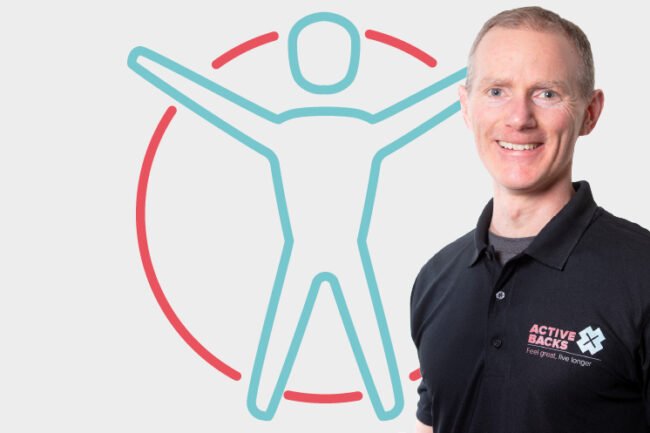24: What to do when your lower back hurts sitting
24: What to do when your lower back hurts sitting
This episode is entitled “What to do when your lower back hurts sitting” You will learn:
- Why your lower back hurts sitting
- What to do when your lower back hurts sitting
- The different types of sitting
- How long to sit for
- How to rehabilitate your back so that you can sit pain-free again

Why your lower back hurts sitting
Your lower back hurts sitting because it’s trying to tell you there’s a problem. Nociceptors are tiny nerve endings we have in our body that send messages to the brain when there’s a problem. The brain interprets that as painful and projects that pain into the body part. Sometimes it doesn’t hurt so much or it doesn’t hurt at all when you first sit down, or the first five minutes, but then it becomes increasingly painful. The biological purpose of pain is to tell you there’s a problem. When you sit, you orientate your body differently than how you do when you’re standing or walking. There may be something about that loading that’s more than your back can cope with. You might find that if you sit for more than 10 minutes, it hurts. There’s a gradual increase in pressure as you sit there. The tissue tolerance is very low.
What to do when your lower back hurts when sitting
Stop sitting, at least in the very short term. If it hurts you, don’t sit, or sit in a different way, such that it doesn’t hurt. Or take a break.
The different types of sitting
If you stay in any position for long enough, that’s constant and sustained loading, eventually something will fatigue and get sore to warn you to stop doing it. If you’re working at a keyboard and mouse try active sitting on relatively high benches and wobble cushions. Perch on the front edge and hold yourself up with your hips at 130 degree angle. That’s easier to maintain and operate neutral spinal posture. It’s also easier to wobble and to move from that position, since your spine is held in a slight lordosis, a light curve in the way. A key point of active sitting is don’t stay still. Wobble from side to side while you sit. Keep your elbows tucked in at your side at all times. Don’t stay sedentary, there are massive consequences to it. Your metabolic rate drops very low and you store that as fat.
How long to sit for
Only sit for as long as you can without pain. If you sit beyond that point, you’ll get more pain, and then you could get to the point where you actually do some damage. If you ignore the pain for long enough, and you sensitize your nervous system, you are in danger of learning pain and increasingly associating sitting with back pain. Don’t ignore pain when sitting. Keep your duration of sitting within the limits of pain. You may need some micro breaks. It may be wobbling while you’re sitting, it doesn’t mean that you have to get up and go for a one hour and walk. Just break up your spells of sitting.
How to rehabilitate your back so that you can sit pain free again
Do a little bit of sitting. If you avoid sitting, then when you go back to do it, your tolerance will have dropped enormously. Your back may be less irritable, but it will also not be used to sitting and you’ll be more likely to experience pain. If you want to get back to a life of being able to sit, you should sit now. If sitting for 10 seconds hurts, don’t do it. Cut it out for a couple of days and then start again, even if it’s only for 20 seconds or two minutes at a time, but keep it within the pain-free time zone. Do that for two or three days in a row and then increase it. Gradually increase the duration of the load. That gives your back and other tissues time to adapt. If you suddenly and significantly increase the load or the duration, it will go wrong.
If you’re going to cut it to zero, only do so for a couple of days and then try and get back to sitting in a slightly compromised or different sitting position for briefer periods of time, and then slowly build up the duration you can hold it for and slowly alter the positions that you’re using as well. Start to get back to doing the things that you need or want in the long-term to get back to do doing.


